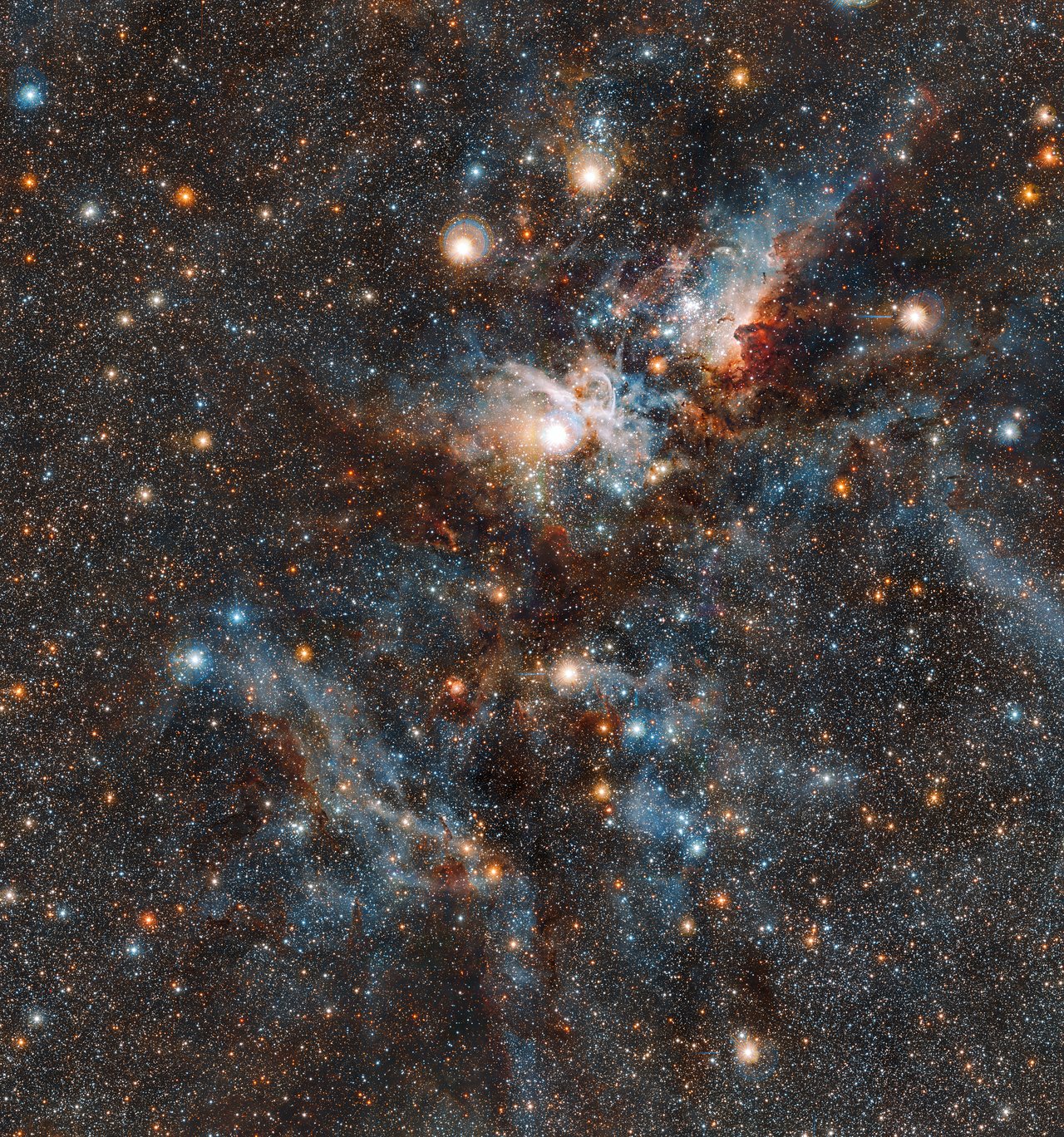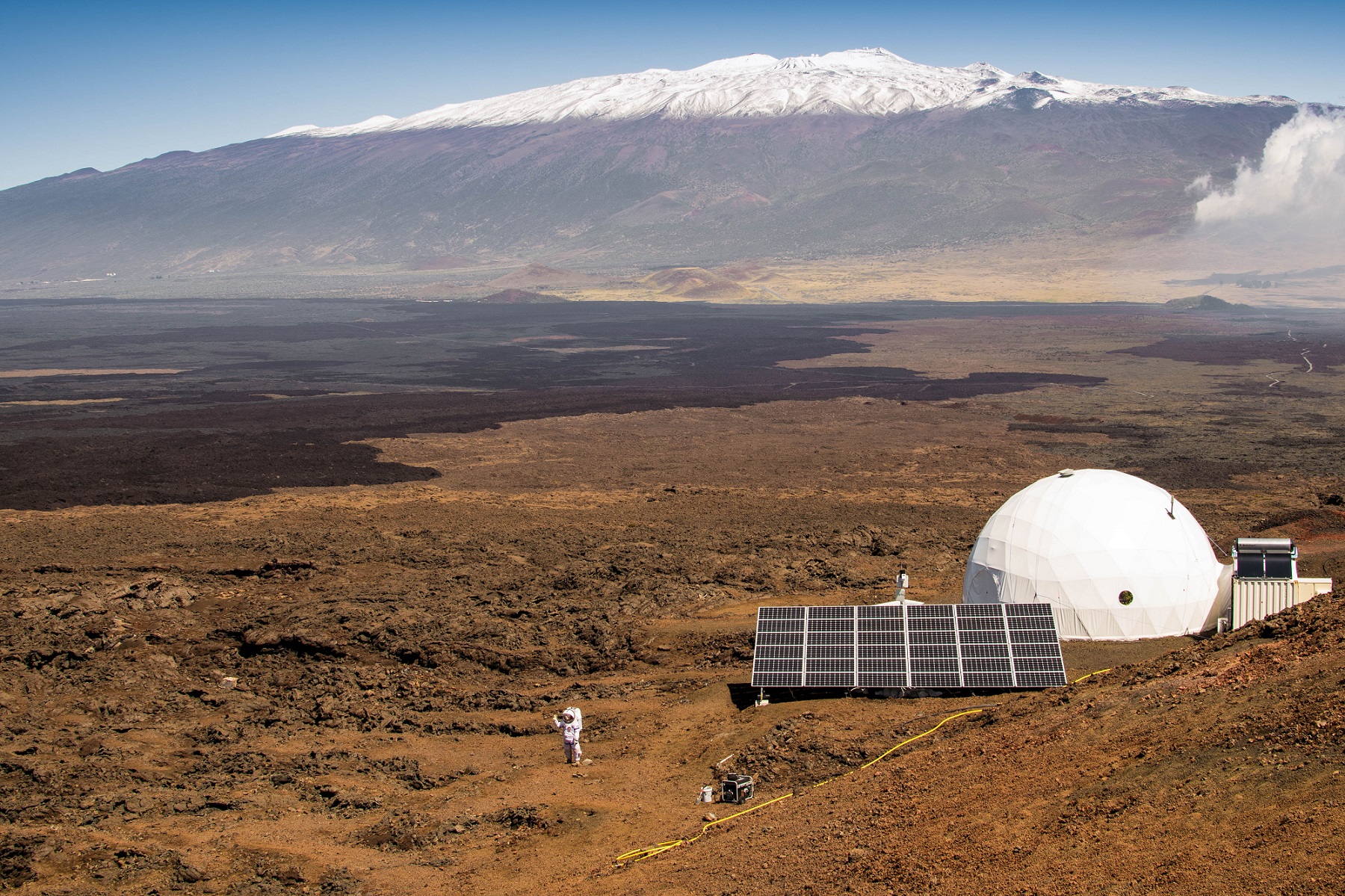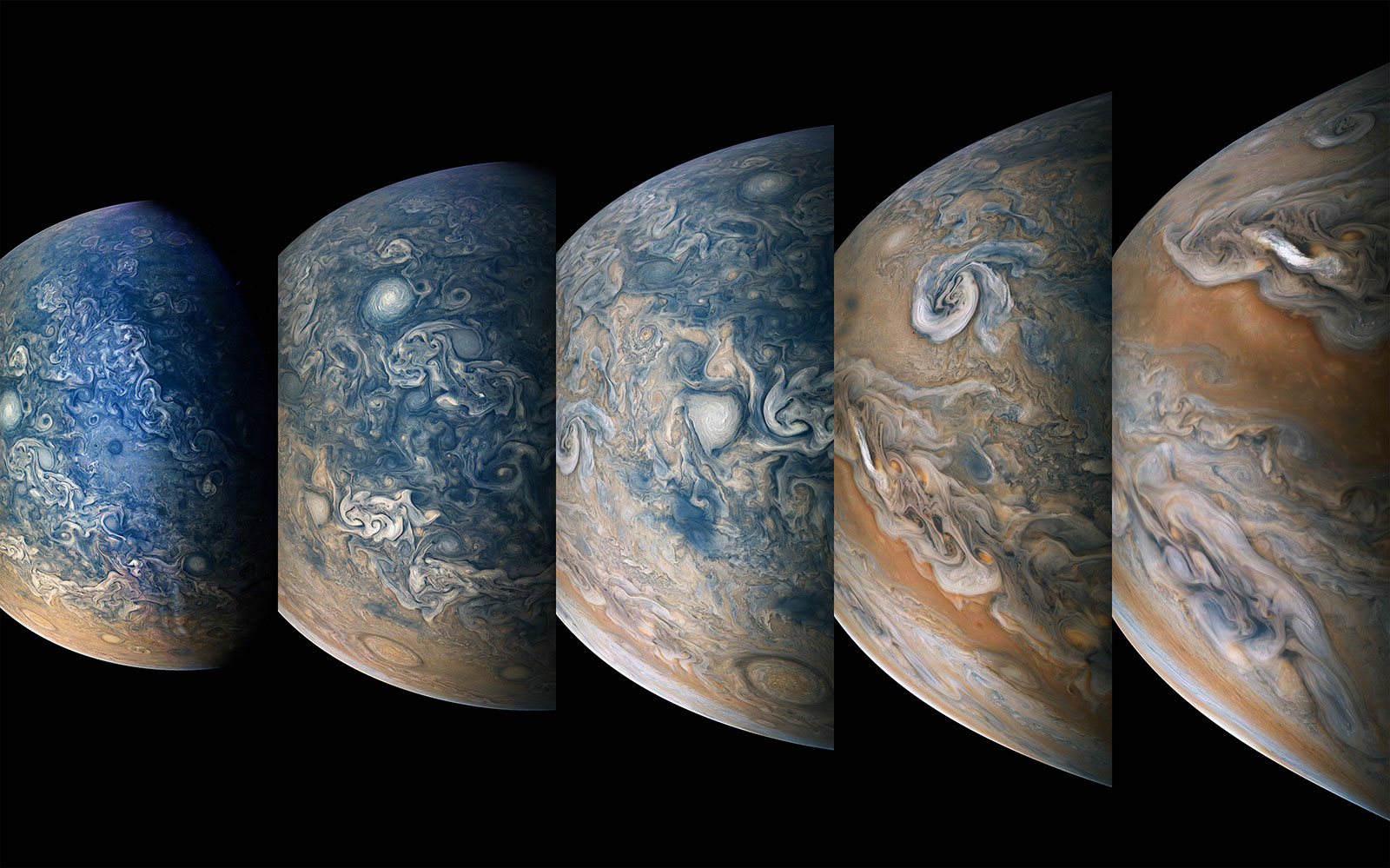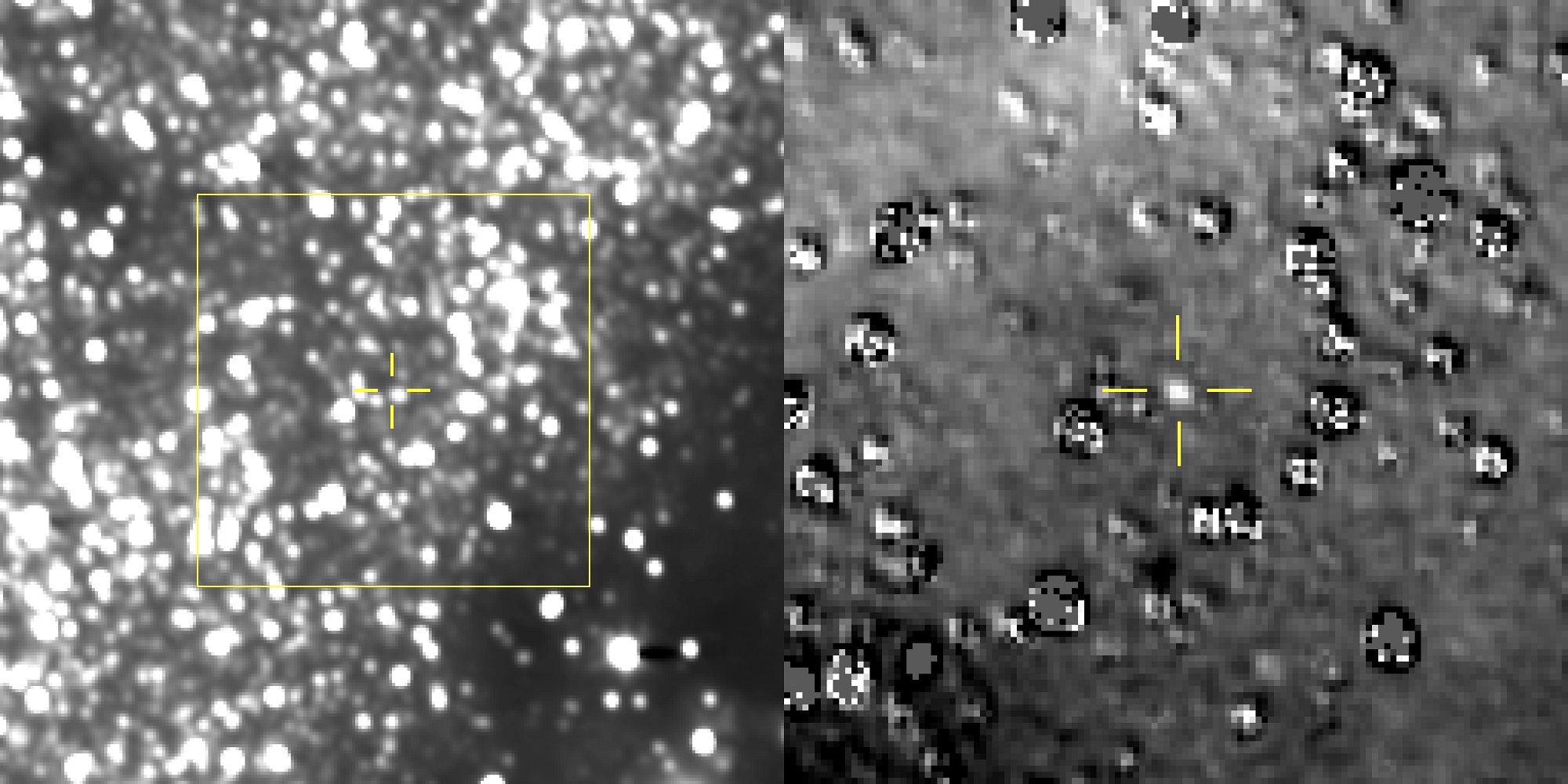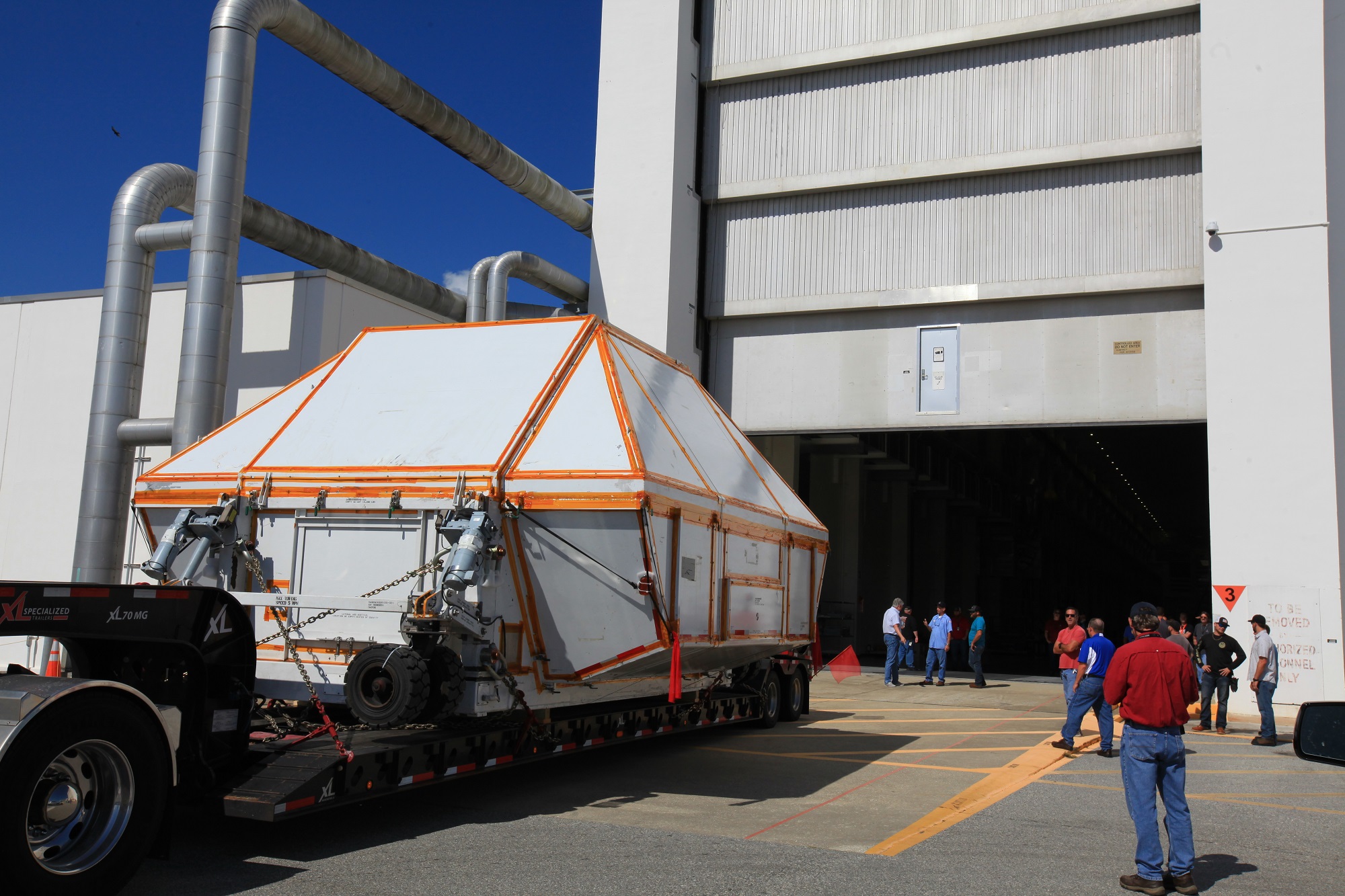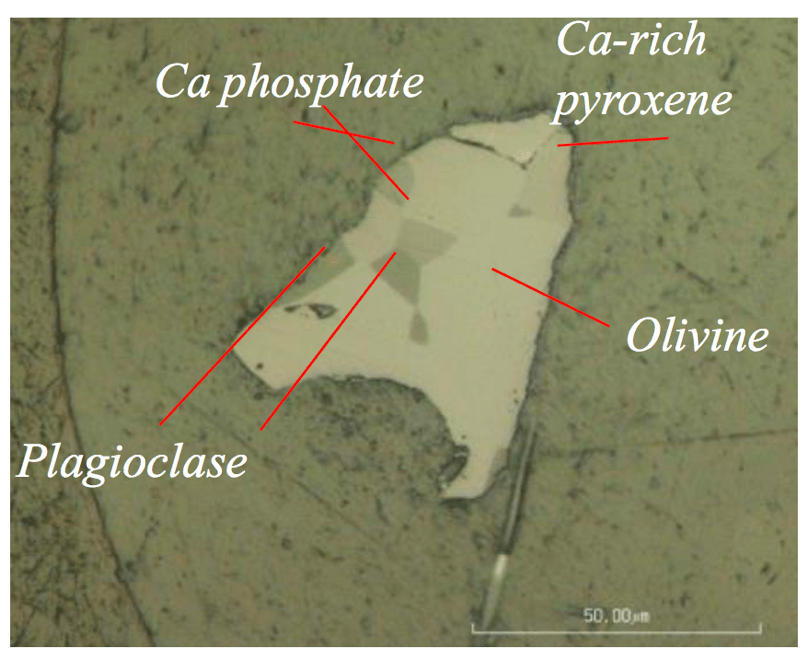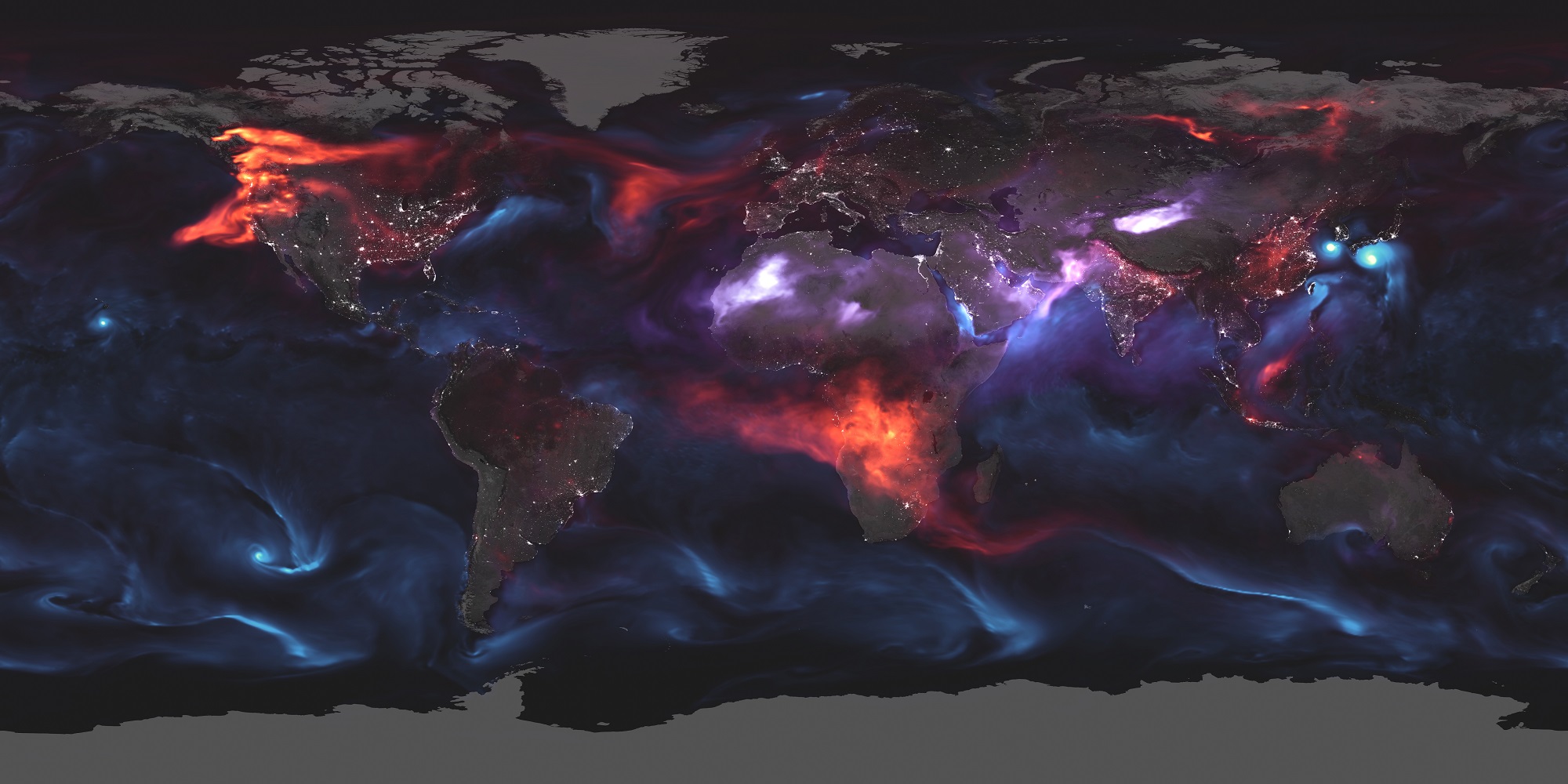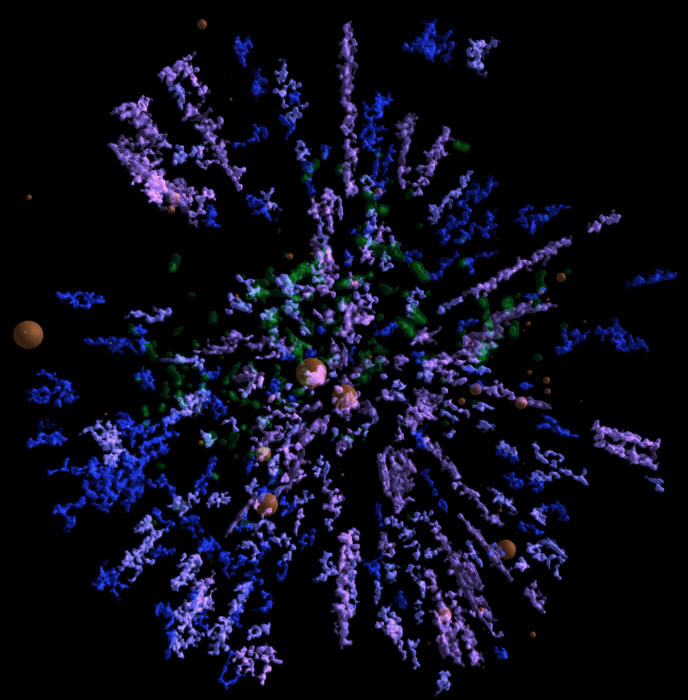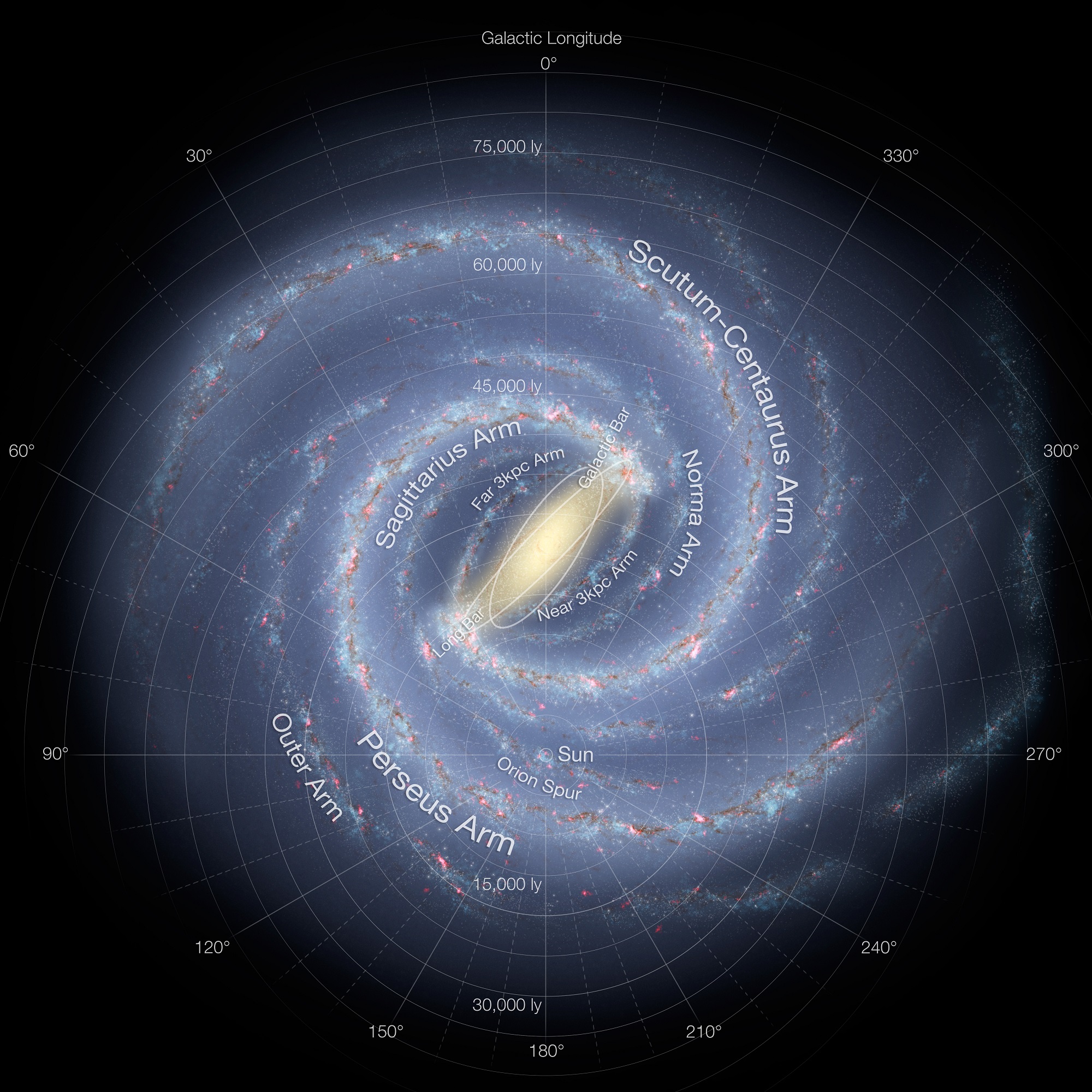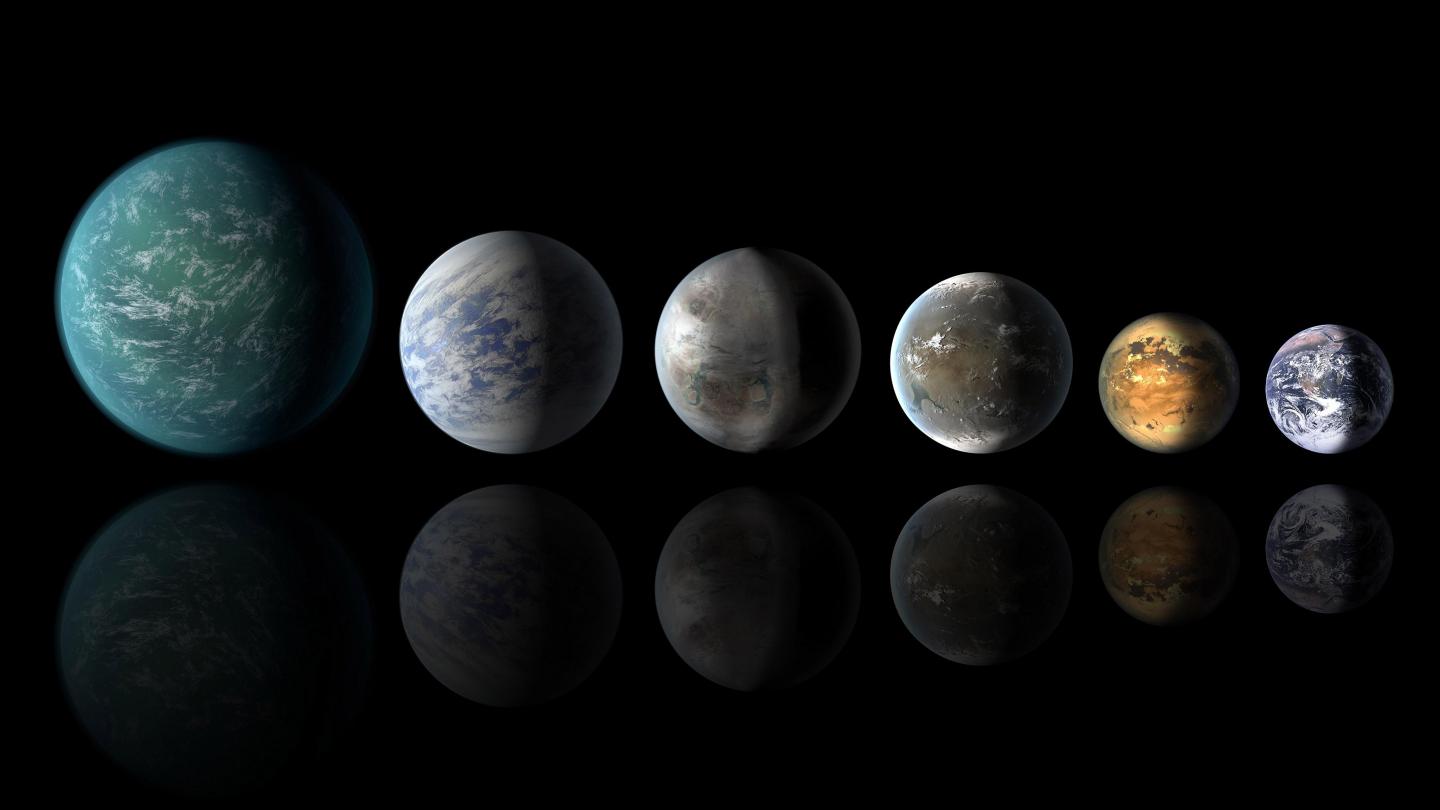Located about 7500 light-years from Earth, in the constellation of Carina, lies a star-forming region known as the Carina Nebula. This dynamic, evolving cloud of interstellar gas and dust measures about 300 light-years in diameter and is one of the Milky Way’s largest star-forming regions. It is also an exercise in contrasts, consisting of bright regions of gas illuminated by intense stellar radiation and dark pillars of dust that obscure star formation.
Continue reading “Telescope Pierces into One of the Biggest Nebulae in the Milky Way to Reveal its Newly Forming (and Nearly Dying) Stars”
Telescope Pierces into One of the Biggest Nebulae in the Milky Way to Reveal its Newly Forming (and Nearly Dying) Stars
